- There are no more items in your cart
- Shipping Calculated at checkout
-
Sub-Total (inc. VAT)
£0.00
Need Help?
Fire Batts
Buy fire batts at Rawlins Paints, used for fire protection of openings in fire barriers used for pipes and services to pass through.
If you require more help to find and specify fire protection for your project or contract, our technical team are always on hand to advise. Give us a call on 0113 2455450 (option 2) or send a message to [email protected].
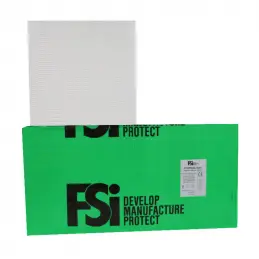
FSi Stopseal 50/60 Fire Batt
An ablative-coated stonewool board used to reinstate the fire resistance performance of internal wall and floor constructions where apertures are penetrated by single or multiple services. Prevention of air leakage and provides smoke seal Maintains Acoustic performance Assumed working life 30 years Highly flexible, high performance...
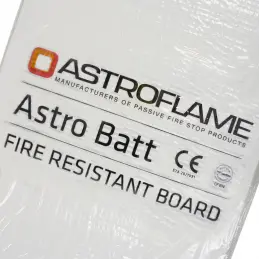
Astroflame Fire Resistant Batt
Specifically designed for sealing around service penetrations in walls and floors, a single Astroflame board (50mm or 60mm thick) can provide high levels of fire integrity and insulation. Tested in Block Wall, Concrete, Masonry, Plasterboard Partition and tested in Concrete Floors. Astroflame Fire Resistant Batt Coating Spray Grade,...
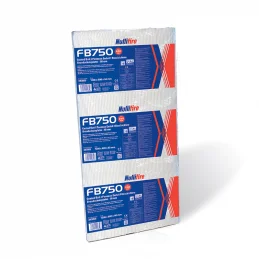
Nullifire FB750 Intubatts
Fully identifiable, fire resistant ablative skinned rock mineral wool boards used for fire protection of openings in fire barriers used for pipes and services to pass through. Refer to order references below Factory finished unique multilayered, low resin bonded, rock mineral fibre board Ablative coated on both faces with unique...
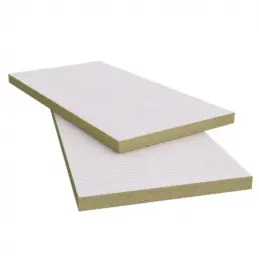
Rockwool 50mm Ablative Coated Batt
A high-density stone wool core, pre-coated on both sides with our high-performance ablative coating. Ablative Coated Batt has been comprehensively tested as part of the Rockwool Firepro range of fire protection products, specifically for use in service penetrations, head of wall and other void seals. Provides fire stopping solutions in...
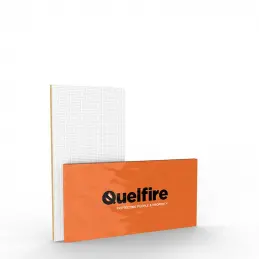
Quelfire QuelStop Ablative Coated Fire Batt System
A coated mineral wool board used to reinstate the fire rating of wall and floor constructions where they have been penetrated by services, up to a 2 hour fire rating. Available alongside QuelStop Ablative Coating, a flexible coating for use when installing the QuelStop Ablative Coated Fire Batt system. QuelStop Fire Batt is always installed...
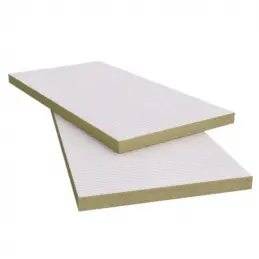
Rockwool 60mm Ablative Coated Batt
A high-density stone wool core, pre-coated on both sides with our high-performance ablative coating. Ablative Coated Batt has been comprehensively tested as part of the Rockwool Firepro range of fire protection products, specifically for use in service penetrations, head of wall and other void seals. Provides fire stopping solutions in...
Need Help?
Need Help?
Function of Fire Batts in Passive Fire Protection
Fire batts, typically made from non-combustible materials like mineral wool, serve as an integral part of passive fire protection systems. These systems are designed to prevent the spread of fire and smoke within a building by compartmentalising spaces and protecting critical structural elements. The primary function of fire batts is to act as an insulating layer that slows down the transfer of heat, helping to maintain the integrity of fire-rated walls, floors, and ceilings. By doing so, they help to contain the fire within a specific area, limiting its spread and providing crucial time for occupants to evacuate and for emergency services to respond.
Specific Applications:
Fire batts are utilised in a variety of applications within passive fire protection to ensure that buildings can resist fire spread, maintain structural integrity, and protect occupants. Here is an in-depth exploration of specific applications:
1. Structural Protection
- Steel Frames: Fire batts are often applied to steel frames to prevent the rapid rise in temperature that can lead to loss of structural integrity. Steel loses strength at high temperatures, typically around 500°C, which can cause structural failure if not adequately protected. Fire batts help insulate steel members, maintaining their load-bearing capacity during a fire. They are often part of systems that include board systems, spray-applied coatings, or intumescent paints, depending on the specific requirements of the structure.
- Timber Frames: In timber-framed buildings, fire batts can be used to protect the wooden elements, which char at a predictable rate when exposed to fire. The fire batts provide additional fire resistance by delaying the combustion process, allowing more time for evacuation and firefighting efforts. This is especially important for lightweight timber structures, which require more protection compared to heavy timber.
- Concrete Frames: Although concrete frames generally have inherent fire resistance, fire batts may be used in specific situations where additional protection is required, such as in areas prone to spalling, where the outer layers of concrete break away under intense heat, potentially exposing the structural reinforcement.
2. Compartmentation and Fire-Stopping
- Fire Compartmentation: Fire batts are critical in creating fire compartments within buildings. These compartments are designed to contain fires within a specific area, preventing the spread of fire and smoke to other parts of the building. Fire batts are installed within walls, floors, and ceilings to ensure these compartments maintain their integrity under fire conditions. This application is vital for ensuring that fire does not spread between different areas of a building, which is particularly important in multi-storey buildings.
- Penetration Seals: One of the most common applications of fire batts is in sealing penetrations where services such as pipes, cables, and ducts pass through fire-rated walls or floors. These penetrations are potential weak points that could allow fire and smoke to bypass fire-resistant barriers. Fire batts are used in conjunction with other fire-stopping materials, such as sealants and collars, to maintain the fire resistance of these barriers and prevent the spread of fire through these openings.
3. Fire-Resistant Enclosures
- Ductwork and Service Shafts: Fire batts are also used to protect ductwork and service shafts that pass-through fire compartments. These ducts can act as conduits for fire and smoke if not properly insulated. Fire batts are applied to ensure that these ducts maintain their fire resistance and do not compromise the integrity of the fire compartments they pass through.
- Curtain Walling and Cladding Systems: In buildings with curtain walling or external cladding systems, fire batts are used to enhance the fire resistance of the exterior walls. They are placed behind the cladding or within the cavity to prevent fire from spreading vertically or horizontally across the facade. This application is particularly important in preventing external fire spread, which can lead to large-scale fire events if not properly controlled.
4. Junctions and Interfaces
- Junctions Between Different Systems: Fire batts are often used at junctions between different fire protection systems, such as where a fire-rated wall meets a floor or ceiling. These junctions can be vulnerable points where fire could potentially breach the fire protection measures. Proper installation of fire batts at these junctions ensures continuity of fire resistance across different building elements, maintaining the overall integrity of the fire protection system.
These applications highlight the versatility and critical role of fire batts in maintaining the fire safety of buildings by providing insulation, compartmentation, and protection for various structural and non-structural elements. Proper installation and compliance with relevant standards are essential to ensure that fire batts perform effectively in their intended applications.
Fire Resistance
Components of Fire Resistance:
Fire resistance is typically defined by three main criteria: load-bearing capacity, integrity, and insulation. Fire batts primarily contribute to the insulation aspect by reducing heat transfer through the structure. They help maintain the temperature on the unexposed side of a fire-rated assembly (like a wall or floor) below critical levels, which is essential for preventing the ignition of nearby materials and protecting structural components from heat damage.
Load-bearing Capacity and Integrity:
In addition to insulation, fire batts indirectly support the load-bearing capacity and integrity of a structure. For instance, in steel-framed buildings, fire batts are used to encase structural steel members, protecting them from reaching temperatures where their strength would be significantly reduced. Similarly, in timber-framed buildings, fire batts can delay the combustion of wood, which helps maintain the structural stability of the building for a longer period during a fire.
Fire Resistance Ratings:
The effectiveness of fire batts is quantified through fire resistance ratings, which indicate how long a component can withstand fire exposure while maintaining its load-bearing capacity, integrity, and insulation. These ratings are usually expressed in minutes, with common ratings being 30, 60, 90, or 120 minutes. The exact rating required depends on building regulations and the specific fire safety strategy for the building.
Building Regulations and Compliance
Regulatory Framework:
Fire batts must comply with national and regional building regulations, which stipulate the minimum standards for fire safety in different types of buildings. These regulations, such as those found in the UK’s Approved Document B, set out requirements for fire resistance based on factors like building height, occupancy type, and the potential fire load. The regulations also provide guidance on the use of materials and systems that have been tested and certified to meet these standards.
Third-Party Certification:
To ensure compliance with building regulations, fire batts are often subject to third-party certification. This process involves independent testing and evaluation by accredited bodies, which verify that the fire batts meet the required performance standards. Third-party certification is considered more reliable than self-certification because it includes rigorous testing, factory production control audits, and ongoing surveillance of the product’s performance over time. This certification is increasingly being required as a prerequisite for construction tenders and is endorsed by various industry bodies and government authorities.
Regulatory Guidance and Standards:
In addition to certification, the use of fire batts must align with specific standards and guidelines. For instance, the BS 476 series of standards in the UK outlines the testing methods and performance criteria for fire resistance. More recently, European standards (EN) have been adopted alongside these, providing a harmonised approach to fire safety across the EU. Compliance with these standards ensures that fire batts are effective in real-world applications and meet the expectations set by building regulations.
Fire Testing and Certification
Types of Fire Tests:
Fire batts are subjected to various fire tests to evaluate their performance under simulated fire conditions. These tests include assessments of the material’s ability to resist ignition, limit flame spread, and maintain insulation. The results of these tests are used to determine the fire resistance rating of the batts and to provide the necessary documentation for certification and regulatory approval. Common tests include the fire propagation test (BS 476 Part 6), and the surface spread of flame test (BS 476 Part 7).
Certification Processes:
There are different levels of certification, including first party (self-certification by the manufacturer), second party (certification by an industry association), and third-party certification. Third-party certification is the most rigorous and involves independent testing by accredited laboratories. This process not only evaluates the fire performance of the batts but also includes audits of the manufacturing process and regular product surveillance. The certification provides assurance that the fire batts will perform as expected in the event of a fire.
Assessment and Extensions:
Given the impracticality of testing every possible configuration in which fire batts might be used, manufacturers often rely on assessments to extend the applicability of test results. These assessments are conducted by fire consultants or testing laboratories, which use the data from tested scenarios to predict the performance of the batts in untested configurations. This process allows for a broader range of applications while ensuring that safety standards are maintained.
Application and Installation
Installation Requirements:
The effectiveness of fire batts is highly dependent on their correct installation. Detailed installation guidelines provided by manufacturers must be followed to ensure that the batts provide the intended level of fire resistance. This includes proper fitting around service penetrations, sealing joints and edges, and ensuring that the batts are securely fixed in place. In some cases, additional fire-stopping materials may be required to fill gaps and ensure a complete fire barrier. Contact Rawlins’ technical team if you require assistance with supporting fire stopping products.
Site-Specific Considerations:
The installation of fire batts must account for site-specific conditions, such as humidity, temperature, and the presence of other building materials. For example, some fire batts may require protection from moisture to maintain their insulating properties. Additionally, the compatibility of fire batts with other materials, such as adhesives and sealants, must be considered to avoid compromising the fire protection system. Proper site preparation, including cleaning and priming surfaces, is often necessary to ensure good adhesion and performance.
Quality Assurance and Inspection:
To ensure that fire batts are installed correctly, inspections and quality assurance processes are often implemented. This may include visual inspections, checking the installation against the manufacturer’s guidelines, and conducting tests to verify the integrity of the fire-stopping measures. Regular maintenance and inspection of installed fire batts are also important to ensure that they remain effective over the life of the building. Any modifications or repairs to the building that affect the fire protection system should be carefully managed to avoid compromising the fire resistance.
FAQs
What are fire batts?
Fire batts are specifically designed fire-resistant insulation products used in the construction of buildings to enhance their fire protection. They are made from materials that resist the passage of fire, smoke, and heat, contributing to the passive fire protection system of a building. These materials can include mineral wool, glass wool, or other non-combustible materials, which are treated or engineered to withstand high temperatures.
How do fire batts work?
Fire batts work by preventing the spread of fire, smoke, and heat through a building's compartments, such as walls, floors, and ceilings. They are used to fill gaps or spaces around service penetrations like pipes, cables, and ducts, maintaining the integrity of fire-rated compartments. The effectiveness of fire batts depends on their installation and their ability to maintain their shape and properties under fire conditions. The batts are often used in conjunction with other fire-stopping products, like fire-resistant coatings or sealants, to create a complete barrier against fire and smoke.
Where are fire batts typically used?
Fire batts are commonly used in:
- Service Penetrations: Around pipes, cables, and ductwork that pass-through fire-rated walls or floors to prevent fire from spreading through these openings.
- Structural Fire Protection: In ceiling voids, around structural steel beams, and in walls to enhance the fire resistance of the building’s structure.
- Compartmentation: Within walls and floors to create fire compartments that limit the spread of fire and smoke, allowing for safe evacuation and reducing property damage.
- Cavity Barriers: In external wall cavities or roof spaces to prevent the spread of fire through concealed spaces.
What is the purpose of using fire batts?
The primary purpose of fire batts is to maintain the integrity of fire compartments within a building. By sealing gaps and spaces where fire, smoke, and heat could pass, fire batts help to:
- Contain fires: Limiting the spread of fire to its compartment of origin, allowing more time for evacuation and firefighting efforts.
- Protect structural elements: Ensuring that key structural components do not fail prematurely during a fire.
- Enhance overall building safety: Contributing to the building’s ability to withstand fire without catastrophic failure, thus protecting lives and property.
How are fire batts tested?
Fire batts are tested according to specific fire resistance standards to determine their performance in fire conditions. The testing process typically involves exposing the batts to high temperatures in a controlled environment to assess their ability to prevent the passage of fire, smoke, and heat. Key performance metrics include:
- Integrity: The ability of the batt to prevent fire and smoke from passing through.
- Insulation: The batt’s effectiveness in limiting the temperature rise on the unexposed side of a fire compartment.
- Load-bearing capacity: For batts used in structural applications, their ability to maintain the structural stability of the building component under fire conditions.
Fire batts are tested under standards such as BS 476 (British Standard) or EN 13501-2 (European Standard), which specify the conditions and criteria for fire resistance performance.
What standards do fire batts need to meet?
Fire batts must meet the fire resistance standards as dictated by building regulations. These include:
- BS 476: A British Standard that includes various parts addressing different aspects of fire resistance testing, such as fire propagation and surface spread of flame.
- EN 13501-2: A European standard that classifies the fire resistance of building materials, including how they perform in terms of load-bearing capacity, integrity, and insulation.
- Certification Requirements: Fire batts are often subject to third-party certification to verify that they meet the required performance levels. This certification is important for compliance with building codes and ensuring the product’s reliability in a fire scenario.
Can fire batts be used in different types of construction?
Yes, fire batts can be used in various types of construction, but their effectiveness and application method can vary depending on the construction material. For example:
- Masonry Walls: Fire batts used in masonry walls might need to be combined with other fire-stopping materials to seal gaps effectively.
- Drywall Systems: In drywall constructions, the installation of fire batts must be done carefully to ensure that they do not compromise the wall’s fire rating.
- Steel Structures: Fire batts around structural steel may need to be supplemented with fire-resistant coatings to protect against rapid temperature increases that could weaken the steel.
It is crucial to select fire batts that are tested and certified for the specific type of construction and to follow the manufacturer’s installation guidelines.
Do fire batts require maintenance?
Fire batts generally do not require ongoing maintenance once properly installed. However, it is essential to:
- Ensure they are not disturbed: During building modifications or renovations, care should be taken not to damage or displace the fire batts.
- Periodic Inspections: Regular inspections are recommended to ensure that the fire compartments remain intact and that the fire batts are still in place and functioning as intended.
- Compliance with Fire Regulations: Any alterations to the building that affect the fire compartments should be evaluated to ensure that fire protection measures, including fire batts, are still effective.
What are the limitations of fire batts?
The limitations of fire batts include:
- Dependence on Installation Quality: The effectiveness of fire batts heavily relies on correct installation. Improper installation can significantly reduce their fire-stopping capabilities.
- Specificity to Tested Configurations: Fire batts are tested in specific configurations, and their performance may not be guaranteed if used in untested or non-standard applications.
- Material Compatibility: The performance of fire batts can vary depending on the materials they are used with. For instance, a fire batt designed for masonry might not perform adequately in a drywall installation without additional measures.
- Environmental Factors: In some cases, fire batts may be susceptible to degradation from moisture or other environmental conditions, which can affect their long-term performance.
How long does a fire batt last?
The lifespan or duration for which fire batts provide effective fire protection is primarily determined by the fire rating they are designed to achieve. Fire batts are part of passive fire protection systems, which are generally rated for specific periods such as 30 minutes, 60 minutes, 90 minutes, or 120 minutes, depending on the requirements of the building and the standards they are tested against. However, the material itself does not deteriorate quickly, and as long as it is installed correctly and not compromised by external factors, it can continue to provide protection for the lifetime of the building.
How thick is fire batt insulation?
The thickness of fire batt insulation can vary depending on the specific requirements of the application and the fire rating needed. Typically, the thickness is determined based on the fire resistance period required and the construction details of the building. For example, thicker layers of insulation may be required for higher fire ratings or for protecting more vulnerable structural elements. The exact thickness is usually specified by the manufacturer and is based on extensive fire testing and certification processes.
Is Batt insulation fireproof?
Batt insulation, particularly those designed for fire protection, are fire-resistant but not entirely fireproof. Fire batts are designed to resist fire and slow down its spread, thereby providing time for evacuation and firefighting. They can maintain their integrity and insulation properties for a certain period during a fire, as defined by their fire resistance rating. However, like most materials, they will eventually succumb to fire after their rated duration has been exceeded.
